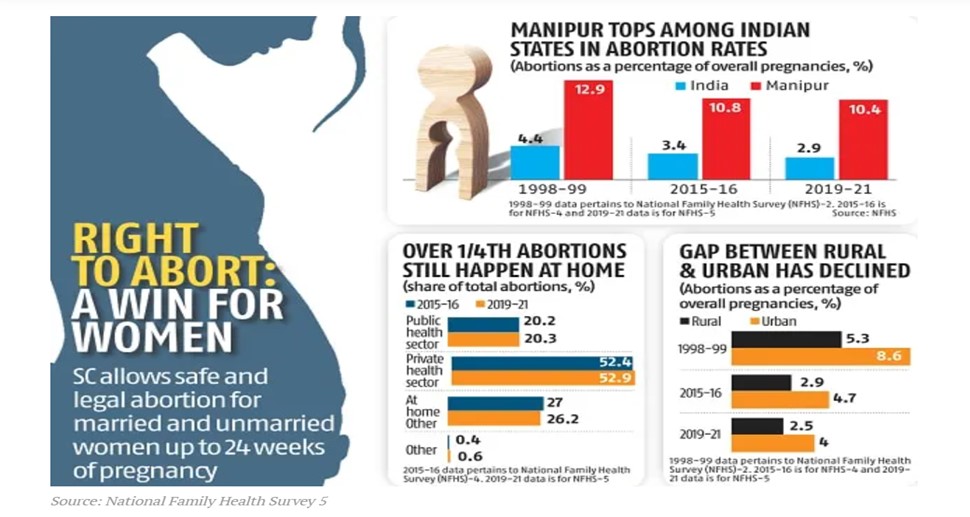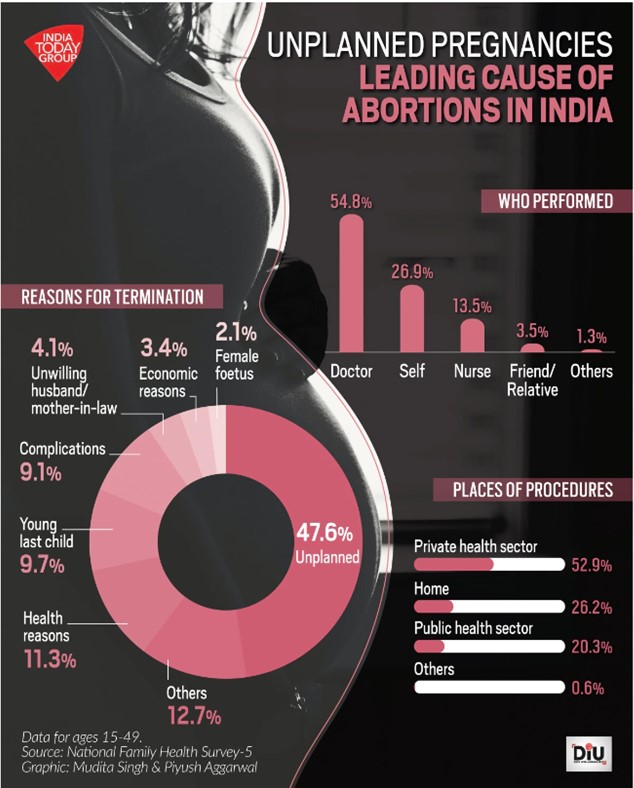The Supreme Court of India delivered a landmark judgment recently (last month) in favor of women reproductive rights. The court held that every woman, whether married of not, irrespective of her marital status has a right to abort pregnancy within 24 weeks. This judgment has drawn praises from women rights activists all over the world. After the controversial judgment by U.S Supreme court that overturned decision in Roe v. Wade and took away right to abort, this particular judgment was hailed by many.

This landmark judgment has placed unmarried women at par with married women and both are granted the same rights with respect to abortions without any discrimination. The law no longer distinguishes between reproductive autonomy of married and unmarried women. Medical termination of pregnancy Act did not contain specific provision for single women, exceptions were given to widow, minors, divorced women, victims of rape and mentally ill/disabled. Moreover, the rights given to ‘single’ women was restricted only up to 20 weeks. This was also violative of Article 14 of our constitution (Right to Equality) and Article 21 which gives rights over reproduction/reproductive autonomy to all without discrimination. This progressive judgment came after a woman separated from her partner and demanded a right to abort the baby which they had during their consensual relationship.

The implantation of this judgment will also help in abortions being done safely and legally. The court have taken a liberal view as opposed to the society that created a social stigma on pregnancy of single women. The judgment also defies the age-old mentality that only married women can have unwanted pregnancies. Right to abortion is one of the fundamental rights and should indeed to provided equally to all. Every woman might have a different reason for terminating pregnancy but nonetheless they are all important. Pregnancy comes with financial, mental and physical burdens with which every woman might deal differently. The choice of continuing/discontinuing pregnancy also depends on several socio-cultural factors to which the woman might be subjected.

Now the word husband under the MTP Act can be implied to have a broader meaning. It would now be interpreted to include the word ‘partner’ (in case on unmarried couple). The other conditions under MTP Act regarding procedure still exists. For instance, two doctors under medical board will examine and ensure that such abortions do not lead to harmful state of health for the woman. The MTP Act of 1971 had enabled women to finally have a right to abort. Before this act abortions were illegal in India and could attract up to 3 years of imprisonment.
Even though there is gap between law and reality (considering the social stigma attached to abortions, especially by single women), India has still been quite progressive in its judicial activism. This statement draws its interference from the fact that countries like United States of America (seen by many nations as a superpower and a liberal country) took away right to abort (it now varies from state to state) in a regressive judgment.
It can be concluded that even though the pace seems slow, India is moving towards promoting justice and equity amongst its citizens.
Himani Ahlawat
Assistant Professor,
School of Law, Sushant University
